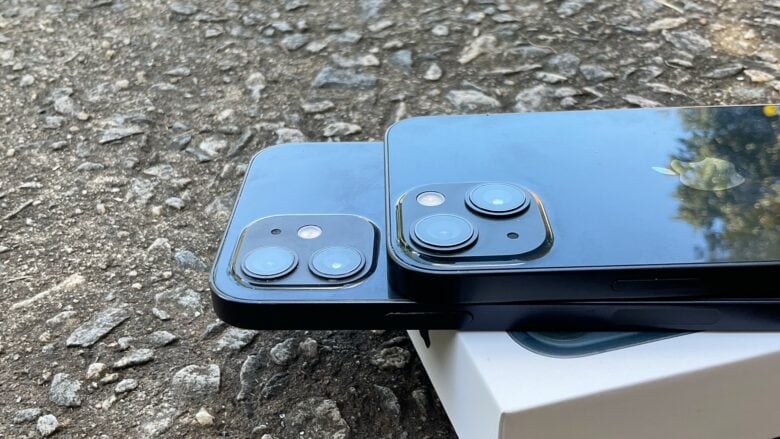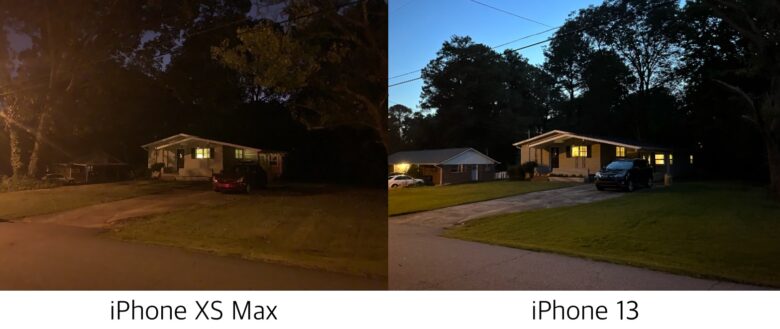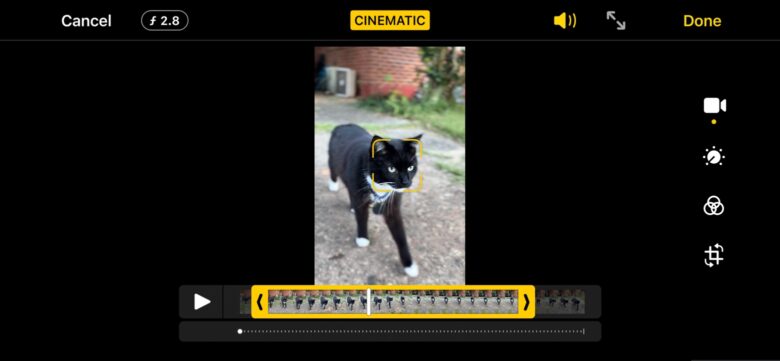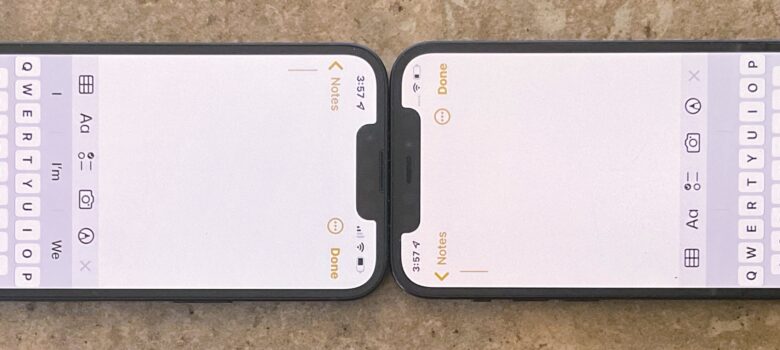Those looking for an upgrade for the iPhone 11, XS or 8 need search no further than the 6.1-inch iPhone 13. Apple’s latest midsize handset offers far better performance than those older models, a noticeably longer battery life and a better camera. Plus there are some other nice additions, like a smaller notch.
Skip the annual upgrade
If anyone is here to find out if it’s worth upgrading from the iPhone 12, I have an easy answer: no. But that’s not at all unusual. There’s rarely a justification for replacing an iPhone (or Android or TV or car) with the following year’s model.
It’s a completely different story for those upgrading from an iPhone 11 or older. Two years or more is enough time for the newest model to include significant improvements. Seven major ones that I counted.
This isn’t a slam against people who do want to upgrade every year — I do it myself. But I’m always aware that there’s no real justification for this besides my desire to own the latest and greatest. That said, the iPhone 13 is a bit better than the iPhone 12 in a couple of ways, including battery life.
1. Longer battery life
Judging the battery life of any smartphone is a dicey business. So much depends on how the device is used. The screen brightness level and Wi-Fi/4G/5G all have big effects on how long a device lasts.
Rather than nail it down to a number that would be arbitrary, I’ll tell you the 6.1-inch iPhone 13 goes for at least an hour longer between charges than my iPhone 12. That’s extra time with the screen on, not sitting idle on my desk. This is welcome because the 2020 model typically dropped below 20% by the end of the day for me.
As for earlier Apple models, I got in the habit of keeping a charger on my desk so I could plug in my iPhone. Otherwise, they’d run flat long before I was ready for bed. Keep in mind, I’m a heavy user: Three or four hours a day is typical. Between ordinary use, reading ebooks, watching video and gaming, five hours isn’t that unusual.
Apple itself says the 6.1-inch iPhone 13 is good for 19 hours of video playback. Compare that to its predecessors:
- iPhone 12: 17 hours
- iPhone 11: 17 hours
- iPhone XR: 16 hours
- iPhone 8: 13 hours
Take all these figures with a grain of salt — that’s video playback without an internet connection, not streaming video. Still, it shows there’s been a general increase over succeeding years. iPhone was once infamous for its terrible battery life. Thankfully, those days are long over. The iPhone 13 is capable of getting even me through a day of strenuous use.

Photo: Ed Hardy/Cult of Mac
And let’s not forget to factor in battery health. Batteries wear out over time – it’s inevitable. No matter what the battery life of your iPhone XR was when it was new, it’s shorter now. and the new battery in the iPhone 13 will undoubtedly go far longer before needing a recharge.
2. iPhone 13 offers world-class performance
Every year, Apple improves the processor at the heart of the newest iPhone. 2021 is no different. The A15 is the best Apple has ever made.
In my tests, the 6.1-inch iPhone 13 scored 4559 on the Geekbench 5 CPU Multi-Core test. That easily blows away the previous equivalent models.
- iPhone 12: 3834
- iPhone 11: 2969
- iPhone XR: 2065
- iPhone 8: 1781
(Note that the Samsung Galaxy S21 5G released in 2021 gets a 3043 on that same test. Ha!)
While benchmark scores are important, don’t expect Apple’s 2021 model to be twice as fast as its 2017 one for ordinary tasks. In my testing, it proves quicker for demanding jobs, but every email doesn’t open 115% quicker.
That said, there are new features in the iPhone 13 that aren‘t available in older ones because their processors aren‘t up to the job. The most notable one is Cinematic mode, which adds subtle background blurring and fancy focus shifts to videos shot with iPhone 13 models.
If you’re looking for even better performance, you’ll have to jump up to the iPhone 13 Pro models. These score around 4720 on the Geekbench 5 Multi-Core test.
3. 5G speed
Of course, there’s more than one type of performance. You have to have at least an iPhone 12 to have 5G cellular networking. This can bring a significant increase in connection speed.
For this review, I did a speed test at a random location and got 102 Mbps download speeds with a Verizon 5G connection. I’ve had it pass 200 Mbps on my iPhone 12 when I’m in a major city. Whenever I do comparison tests for locations, the 5G connection is always faster than the 4G one.
If you’re upgrading from an iPhone XR or iPhone 11, you’ll almost certainly see an increase in cellular-network performance.
4. Better pictures with a camera upgrade
Looking back at the iPhone cameras over the years, there’ve been changes minor and major. Every rear-facing camera going back to the iPhone 8 has been 12MP, though the specs on these have improved in other ways. The major difference is the addition of the Ultra Wide camera, which arrived in the iPhone 11.
Apple rearranged the position of the two cameras in the 6.1-inch iPhone 13, but that’s just the start. The device has better low-light performance, with Apple promising 47% more light-gathering ability than the iPhone 12.
In 2019, I used an iPhone XS Max to take a picture in the late evening to test its camera. I re-created the picture with the iPhone 13 to test how much better it is in low light. I promise you, both were taken in very similar conditions — just a bit before full dark.

Photo: Ed Hardy/Cult of Mac
I didn’t use Night Mode for this image, but I could have. This lets the device act as low-light camera and take beautiful pictures in almost complete darkness. But it’s best for subjects that aren‘t moving.
And, as mentioned, the iPhone 13 adds Cinematic mode. This puts objects in the foreground in focus but blurs the background. I did some tests and I’m very impressed. The handset is smart enough to focus automatically on the object that you probably want it to. For example, in this test video it focused on the only face available — my cat’s.

Screenshot: Ed Hardy/Cult of Mac
If you want to change the focus, you can do that while filming or afterward. Your video depth information is stored so you can change the depth-of-field effect later. It’s an amazing effect, and I expect to see some great TikTok videos featuring it.
All that said, let me remind you of something you already know: The cameras in the iPhone 13 Pro series are better than the ones in this year’s regular iPhone and iPhone mini. The 6.1-inch iPhone 13 makes beautiful pictures and videos but there are tricks only available in the Pro versions.
5. More storage
The base model iPhone 13 comes with 128GB of storage, which is room for heaps of apps, videos, images … whatever. And it’s twice as much capacity as the iPhone 12 for the same price. In fact, 64GB has been the standard for Apple’s midsize models for years, going back to at least the iPhone 8. The change in the 2021 model is welcome.
iPhone RAM has increased almost as slowly over the years. The iPhone 13 comes with 4GB of RAM, as does every midsize model going back to the iPhone XR, which came with 3GB. The iPhone 8 has just 2GB. More RAM improves the performance of your handset because applications have to reload less often when you switch between them.
6. Smaller screen notch
Every Apple handset starting with the iPhone X has a screen notch. The iPhone 13 shrinks the width of this distinctive cutout slightly. Which is … fine. I’m certainly not going to complain about the screen cutout being 20% smaller but it doesn’t change the way I use the device in any way.

Photo: Ed Hardy/Cult of Mac
The newest 6.1-inch model has a 2532-by-1170-pixel resolution at 460 ppi, just like the iPhone 12 of the same size. The iPhone 11 keeps the 6.1-inch screen but drops down to a 1792-by-828-pixel resolution at 326 ppi, and the iPhone XR has the same. Those still packing an iPhone 8 have a 4.7-inch display with a 1334-by-750-pixel resolution at 326 ppi.
More important here than screen resolution is display type. In the midsize models, the iPhone 12 was the jump from LCD to OLED, which provides better contrast. The iPhone 13 includes an OLED display with a 2,000,000:1 contrast ratio. It offers 800 nits max brightness. This is a gorgeous screen that you can use in full sunlight. And its one that’s visibly nicer than its predecessors.
Apple didn’t upgrade the 6.1-inch iPhone 13 with a 120Hz display. For that, you need to get one of the new Pro models.
7. Elegant design
The iPhone 13 chassis keeps the flat edges from the iPhone 12. It’s a design I like: it’s easy to hold and looks good. But if you have trouble adjusting from an Apple model with rounded edges, just put the device in a case. That’ll both protect it and smooth out the corners. A case also levels out the camera hump.
Those with older iPhones probably aren’t familiar with MagSafe. Apple added wireless charging to its handsets long ago, but MagSafe (starting in the iPhone 12) improves on it with a ring of magnets that make the phone and charger cling to each other. Plenty of useful accessories take advantage of the system, from MagSafe power banks to MagSafe wallets.
If you’re moving from the iPhone 12 to iPhone 13, you’re going to notice that the device is heavier because of the larger battery. It’s just a 6% difference but you’ll feel it as soon as you pick up the new device. That said, the change makes a lightweight handset into a slightly less lightweight one. No big deal.
iPhone 13 review: Final thoughts
Anyone who’s been waiting years to upgrade an iPhone XR or perhaps something older will be pleased with the 6.1-inch iPhone 13. You’ll get a faster device with a better camera and much longer battery life.
Even iPhone 12 owners will see a few improvements. Just not enough to justify replacing a practically new handset.
Pricing
The midsize iPhone 13 lists for $799 on Apple’s website for the base model that comes with 128GB of storage. That’s the same launch price as the iPhone 12 with 64GB. But you may have gotten used to paying a bit less. At their debuts, the iPhone 11 was $699, the iPhone XR was $749 and the iPhone 8 was $699.
Still, the new 6.1-inch version is $200 or $300 less than the iPhone 13 Pro models. As I’ve alluded to several times, the Pro versions offer some extra features. But not enough to tempt me away from the more affordable one.
Apple did not provide Cult of Mac with a review unit for this article. See our reviews policy, and check out other in-depth reviews of Apple-related items.
![7 reasons the 6.1-inch iPhone 13 makes a worthy upgrade for iPhone 11 or XR [Review] 6.1-inch iPhone 13 review](https://www.cultofmac.com/wp-content/uploads/2021/09/B613EC6B-30A6-48EC-8BC8-675B0CEDA755-1536x864.jpeg)

